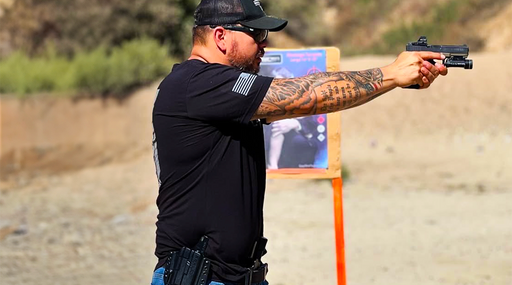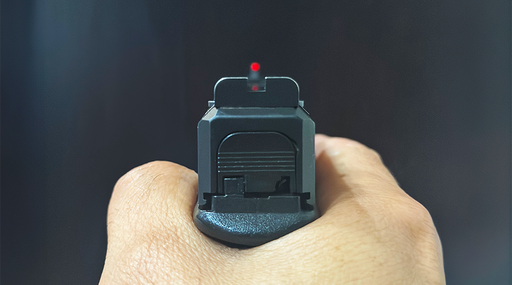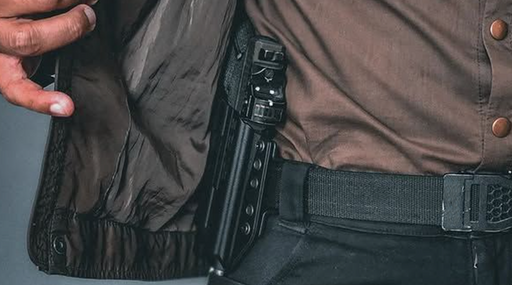Five ways to improve your defensive skills when the weather outside is frightful
There’s credibility to the adage “if it ain’t rainin’, you ain’t trainin’,” and similar motivational statements. But there will still be days when winter weather and short daylight hours simply prevent you from hitting the range. Here are five alternatives to make you a better student of the gun and defensive shooting, which you can practice from the comfort of home.

- Identify locations that offer bullet-stopping cover and concealment in your home and workplace.
Facing a home invasion or mass murder attempt head-on is a potential recipe for disaster, especially if you’re outnumbered or have mobility challenges. Take full advantage of your knowledge of the lay of the land where you live or work. That should include identifying objects or walls that will stop most bullets (cover), as well as penetrable objects that can at least hide you (concealment).
While most pieces of furniture make for easy concealment, only some, like a desk drawer packed full of paper, offer cover. Large appliances like refrigerators, freezers, and ovens offer acceptable cover for handgun rounds and some protection from high-power rifle fire. The door jambs of interior doors and hotel room doors, usually constructed of 2x4s and sometimes cased in a steel frame, offer better-than-nothing protection. Consider placing things like banker’s boxes, full of papers, and chock-full file cabinets strategically if your work area has them available.
- Purchase a good tactical flashlight or two.
Most gun owners are committed to protecting their homes and businesses. And most are committed to gun safety. Being sure of your target is a core safety rule; one that requires light! A standard department store light is often not enough to confirm the armed status of a potential threat, and some environments, not enough to distinguish a known and trusted character from an uninvited one.
A good handheld light, or ready access to one, should be a component of everyday carry. The best lights for concealed carry and home/vehicle defense have a tail cap pressure switch and a lumen rating of 70-150 for small indoor spaces; more for large or outdoor locations.
- Make the tactical flashlight part of your CCW/home defense skillset.
Specific flashlight techniques are a good topic for another article; meanwhile there is some good advice online regarding various techniques and reasons for using them. Working with your unloaded handgun, get comfortable with at least one technique that joins your hands, gun, and light at the same point as well as one that requires separation of the hands holding the light and gun. There are occasions when one or the other might be more suitable.
After getting comfortable with holding and operating the unloaded handgun and light, and observing muzzle and finger safety rules, work the room. Assess whether, and where, there are places or techniques where the light becomes a liability. Mirrors, light-colored walls, and even a shiny or light-colored slide can deliver blinding splash back. Practice using the light as little as possible, but as much as necessary to safely navigate as well as identify an imagined threat. Practice quickly and quietly moving away from the area where you were when the light was on. Figure out what it takes to get your hands on your firearm and flashlight from bed, in the dark. You will be more confident in your preparation to defend yourself and loved ones as a result of this practice.

- Perfect your drawstroke.
An often-ignored but vital aspect of good CHL/CCW practice is mastery of the drawstroke. A good beginner standard is the ability to draw from the gun holster and fire two accurate shots on a 12x18-inch target from five yards—a typical distance of household rooms and hallways—in 2.5 seconds or less.
That’s a relatively tame standard when drawing from an OWB holster. But add an IWB or other low-profile holster, as well as a concealing garment, and this usually represents a challenge. As always, this sort of practice should be done with an unloadedhandgun if practicing indoors. Pay special attention to muzzle and finger control, both on the draw and when reholstering! Done safely and regularly, this kind of practice will make you a more competent carrier than most, and the cost can’t be beat! If you’re part of a carrying family, perform cross-checks of the load condition of each gun for safety, and have tun timing one another from the draw to the “click” of the striker or hammer falling on an empty chamber or dummy round. Although I’m not entirely a fan of lasers on EDC guns, having a family member monitor whether the laser’s point of aim was on target at the moment of “click” can make this a free and friendly game that has life-saving value.
- Practice new shooting positions.
Again with your unloadedgun, learn, or if you already know, practice standard kneeling and prone positions. Practice the supine position, mimicking an event in which you were knocked down or caught sitting on the floor at the genesis of a home or office invasion. Add some of those concealment or cover items discussed under item 1). Pay attention to the difference between seeing your sights on target versus where the muzzle is when aiming around a solid object. See how much of your body you can keep hidden while also viewing critical junctures in your home like an exterior door or the doorway to your safe room if you’ve identified one.
Combining new shooting positions with the use of concealing objects is a great time to get comfortable with both one-handed shooting as well as handling your firearm with your support hand as you protect your own mass behind some obstacle. Be creative, and if you’re part of a family who also practice everyday carry, use “finger guns” (no real firearms) and give one another feedback about how concealed your body really is while still being able to see your sights (fingernails representing sights, in this case). Most often, people aren’t as concealed as they think they are before receiving feedback.
Practice with care
The advice provided here will make you better equipped, skilled, and confident in your ability to defend your home or workplace. As always, Bravo Concealment and I bear no responsibility for any unintended consequences of your practice. Learn and observe firearm safety rules first and foremost!

Eve Flanigan is a defensive shooting and concealed carry instructor living in the American Southwest. Today she works full time as an instructor and writer in the gun industry. Flanigan loves helping new and old shooters alike to develop the skills needed to keep themselves and their loved ones safe.























Leave a comment